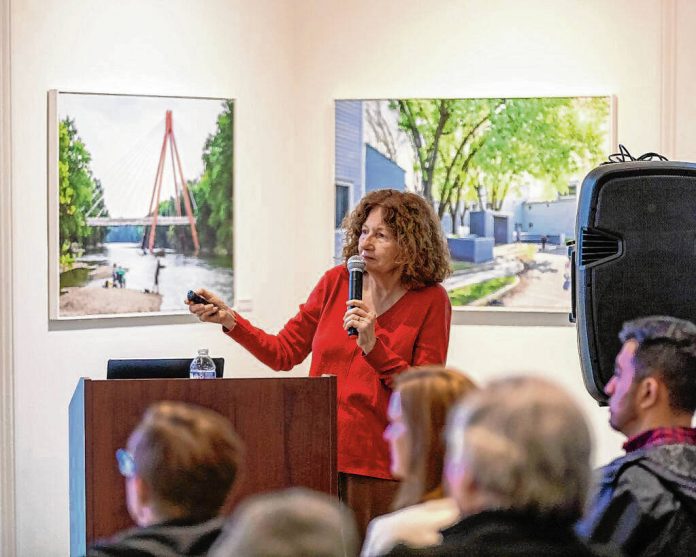In a Mid-Century Modern town where excitement builds over nearly any new construction, architect Ben Weese’s design of Northside Middle School in 1961 generated an underwhelming response.
Local architectural leader J. Irwin Miller, who picked the noted Harry Weese’s firm for the work, hardly was fond of the industrial-style plans inspired by the old Mooney Tannery factory. Same for the then local school board.
Adding to the drama was the behind-the-scenes jockeying that sometimes happens in design firms: Harry Weese was being credited for Northside efforts that actually were his brother’s as part of Harry’s firm — a tension that would surface with Ben as late as his visit to a 2014 two-day local architectural symposium on Harry Weese.
Part of the struggle lay in the siblings’ extroverted/introverted wiring.
“Harry liked to hang out with wealthy clients and socialize with them and whatnot,” said local journalist and researcher Glenda Winders. “And Ben was a lot more reserved.”
Winders, a regular contributing features writer to The Republic’s Columbus magazine, reported those details and plenty more in an hour-long, free presentation Wednesday “Progressive Preservation Talks Schools Edition: Northside Middle School” at the Columbus Area Visitors Center. A nearly full house of about 65 people, including Bartholomew Consolidated School Superintendent Jim Roberts, attended a gathering markedly different than most design discussions here in the past 30 years.
Winders, an editor who was part of a Copley News Service team that earned a Pulitzer Prize for national reporting in 2006, pulled out historical tidbits that turned the story of a school’s birth into a lesson on sibling rivalry, teamwork, and dealing with public criticism.
The event was part of the nonprofit Landmark Columbus Foundation’s continuing Progressive Preservation series — this one being the third highlighting each of the local schools. Northside was the first built via the Cummins Foundation that covered architect fees of noted designers selected from something of an up-and-coming all-star list of architects through the years.
Landmark Columbus Foundation has hired Winders for the series.
That nonprofit, along with its flagship program of Exhibit Columbus, and now with the help of Winders and others, has made architectural talks trendy, human and accessible, where years ago they sometimes were seen as overly academic or highbrow.
Weese is especially important here because he is credited with designing more Columbus structures — 14, according to the Columbus Area Visitors Center — than any other noted architect, partly because of his friendship with J. Irwin Miller. That was a relationship eventually eroded by Weese’s alcoholism in later years, according to Winders.
It also alienated brother Ben and partly pushed him to launch his own firm after working for 20 years with Harry. Winders phone interview with Ben’s Weese’s wife Cynthia, an accomplished architect currently aiding Ben in hospice care, helped convince Winders that Northside essentially was Ben’s building with some of Harry’s input.
Yet, Ben always referred to Harry as “a genius,” and admired his architectural work.
Northside is especially newsworthy now because it is currently part of a larger overall renovation and construction project being undertaken by BCSC.
Also a part of Wednesday’s gathering was the Northside addition, with a roofline echoing design elements of several other local schools, done in 1992. The female-led architectural firm of Andrea Leers and Jane Weinzapfel did the work.
Plus, in something that the evening’s warm, applauding crowd clearly considered a treat, those two designers reminisced about their work in a video clip that featured both the technical and the emotional.
“Our strategy was really thinking beyond the (local school) originals to a kind of new unity, and that was our goal,” Leers said in the clip.
Weinzapfel expressed thankfulness.
“I just want to say on behalf of both of us how enormously grateful we are for our opportunity to work in Columbus,” Weinzapfel said, “to be part of the great legacy of work there, and we’re just amazingly honored to have had, in the infancy of our practice, the opportunity to take part in this program. The legacy of Columbus inspired us to do our very best and impassioned work.”
More about Landmark Columbus Foundation
Go to https://landmarkcolumbusfoundation.org
More about Landmark Columbus Foundation
Go to https://landmarkcolumbusfoundation.org





